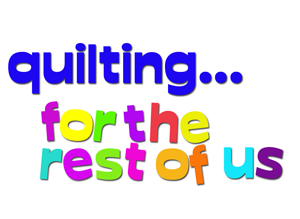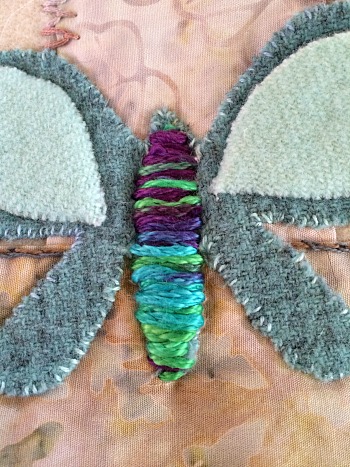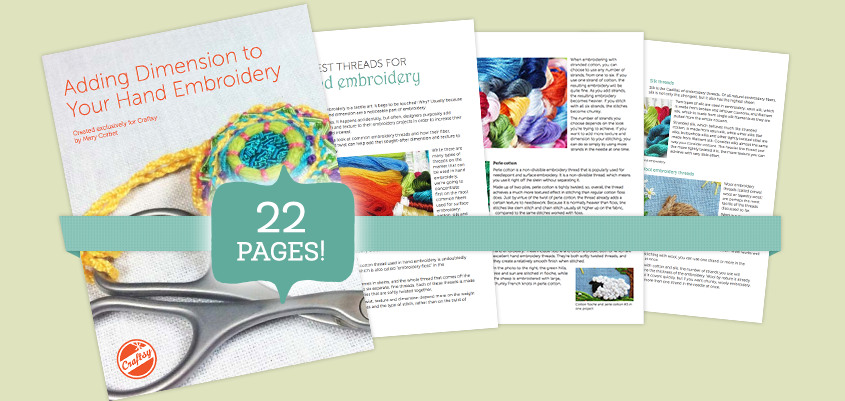It feels odd for me to be saying I just took a sewing class, but there it is. In my attempts to conquer my dislike of fiddly bits, I've just completed another bag-making class on Craftsy.
If I'd been able to go straight through this class in one fell swoop, it probably would've only taken a weekend. It only took me as long to finish the class as it did because I'm deep into coursework now, so I only take random chunks of time to sew when my brain fritzes out from all the reading. Consequently, the sewing I do needs to be as close to mindless as possible (as I have few functioning brain cells left by the time I put down the books).
Enter Zip It Up: Easy Techniques for Zippered Bags with Joan Hawley. I've been a fan of Joan Hawley's Lazy Girl Designs for awhile; I own a couple of her bag patterns although I've never actually gotten them made. The three bags featured in the class were cute as well as seemingly functional. When it comes to physical things like this, I'm a much better visual learner so when I can watch someone do something rather than trying to read a pattern, I'm happier. Joan's step-by-step instructions on the video as well as the written materials that come with the class were very easy to follow.
First, there's the "Runaround Bag." I finished this one a few weeks ago and blogged about it here. I think the bag took me less than two hours to make, and that was only because I was closely consulting the video lessons all the way through to make sure I didn't go horribly awry. Plus, I did a little fussy-cutting, which always takes a little longer.
I was able to use the bag immediately after I made it, which was a plus in my book.
The second bag in the class is the Nikita Bag. This is a basic boxy pouch--there are a boatload of patterns for doing boxy pouches out there and I'm sure they're all probably fairly similar when it comes down to it. But once again I found Joan's way of putting it together very easy to follow. I got this one done in about an hour and a half, all in. Again, that was with a lot of referring back to the video. It would go a lot faster next time.
I absolutely loved the fact that I was finally able to use some of my Marcia Derse fabrics. I bought a couple of panels and several coordinating fat quarters years ago at the show in Houston--If I recall, it may have even been the first year her fabrics were introduced. (She had her own booth and I paid her in person for my fabrics, which always makes you feel a little more connected to those fabrics, doesn't it?) I'd never found the right project for them. It works really well for this.
This if my favorite bag of the three. I really like the design of this pouch and could see me making more, although at the moment I don't know exactly what I'll be using this one for. Wait until my next trip when I'm looking for all the best containers for the tchotchke that always has to come with me.
The third class project is the Bendy Bag. I'm not such a fan of this design--I'm finding it a bit hard to work the zipper once it's all put together. I know that part of that is user error--I needed a slightly wider space between the zipper teeth and my seam. I used the same needle position I had on the other bags, but in this particular design I could've used a little more breathing room. Still, that bend doesn't help.
I used a half-yard of fabric I'd bought while in Hawaii in 2008. I've got a couple of other half-yards of the same print in different colors. I'd had half a thought of using all three fabrics in a fast lap quilt as a souvenir of my trip, but the quilt never got made and I've got plenty of lap quilts now, so this is just as good a way to use it. It's the same fabric outside and lining.
So--all in, I had no difficulty whatsoever making any of these bags. I would have no concerns about deciding I wanted to make any one of them again, maybe two or three times even. (I have a lot of fat quarters I'd love to use up!) The one least likely to get made again is the Bendy Bag, but if it proves itself to be the perfect travel bag for cords or adapters or any of the other multitude of electronic gadgets that travel with me, I'd even be willing to give that one another go.
Joan Hawley is easy to follow and now that I've done her class and several of her bags, I'd be willing to revisit the thought of making one of her patterns that I own. On the flip side, having now done two and a half bag-making classes--and yes, I do plan on finishing Annie Unrein's!--I've also gotten more comfortable with the idea of branching out and making other bags.
Mind you, I still don't enjoy doing it the way I enjoy doing art quilting, hand-dyeing, or embroidery. But I can do it, and that's all I was shooting for. I do still avoid patterns with too many fiddly bits, though. Still not a fan.
The Basics
- 7 lessons, ranging from 18 to 30 minutes.
- Lesson 1 reviews the three bags in the class, gives some advice on choosing zippers and fleece, then talks about presser feet and needle positions. (Do pay attention to the needle position thing, and write it on a post-it note. You reference those needle positions frequently throughout making the bags.)
- Lessons 2 and 3 are the Runaround Bag; Lessons 4 and 5, the Nikita; and Lessons 6 and 7 are the Bendy Bag.
- Each lesson not only gives instructions for the bag itself, but also offers some nice take-away tips that would be useful in other places.
- Class materials are full step-by-step instructions with plenty of photos for making the bags.
If you're a beginning sewist or a beginning bagmaker, I definitely recommend Zip It Up: Easy Techniques for Zippered Bags with Joan Hawley. Great entry-level stuff. If you're more experienced, you may still enjoy her tips and tricks, plus the bag designs.
(Note: Using Craftsy links in this post helps support my podcast and blog. Thanks!)















































